Solutions
By: Mikio Moriyasu - Revised: 2006-06-27 devinIntroduction
An overview of currently available after market and do-it-yourself solutions.Section Links
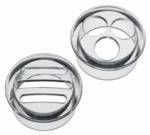
Difusi manufactures this set of two acrylic grilles that are inserted into the speaker opening on the front of the Power Mac faceplate.Pidrus Online Quicksilver Speaker Grille
Three neoprene strips that are included with each grill, act as a snug, protective gasket that holds the grille in place without marring the plastic faceplate. As a result, they can be removed if needed.
The grilles, one with horizontal slots and the other with three separate circular openings, are designed to offer protection against accidental contact with the speaker but would not be effective against a determined vandal with a pencil or pen. In addition, because it is externally and not permanently applied, it could be removed and/or stolen from an open lab environment.
These grilles will only work with "QuickSilver" G4s, however, Difusi is currently working on a grilles for the new dual-processor Power Macs, eMacs, and Apple Pro Speakers. Difusi hopes to have those new grille sets out in the next few weeks.
Cost: $8-10 individually, $18-22 together.
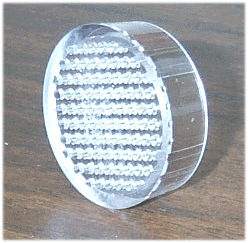
Made from clear plastic, this grille is designed to be a relatively permanent form of protection. Like the Difusi grilles, they are inserted into the speaker opening on the front of the Power Mac faceplate. They are held in place, however, with either double stick tape that comes with each grille, or an adhesive.California Drives G4 Power Mac Speaker Guard
With their small openings, these grilles appears to offer protection against accidental contact with the speaker from fingers and other smaller objects. The more permanent nature of its installation also indicates that it would offer a greater degree of protection against deliberate tampering. Even with tape and glue, however, the grille is still externally mounted and is still susceptible to removal or theft in an open lab environment.
These grilles only work with "QuickSilver" G4s. There does not appear to be any future products that will protect the speakers on the new dual-processor Power Macs, eMacs, or Apple Pro Speakers from this supplier.
Cost: $6-10.
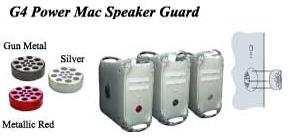
Manufactured and sold exclusively by California Drives, these thick plastic guards are inserted into the speaker opening on the front of the Power Mac faceplate. They appear to be designed so that they are held in place by friction although double stick tape or an adhesive may also be recommended options.
They appear to be very durable and should offer protection against accidental contact with the speaker the size of the openings, however, may still allow pens or pencils to come in contact with the transducer. Depending on how they are held in place, the guard could offer protection against deliberate vandalism but as with the other two options, because they are externally mounted, they can still be removed.
These guards only work with "QuickSilver" G4s. There does not appear to be any future products that will protect the speakers on the new dual-processor Power Macs, eMacs, or Apple Pro Speakers from this supplier.
Cost: $16.
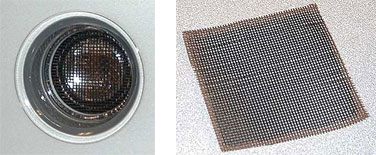
One do-it-yourself option that we found on the Internet that was an internally mounted solution was presented by Melvin Astrahan at USC. He took a piece of scrap copper mesh and sandwiched it between the PowerMac faceplate and the speaker unit.
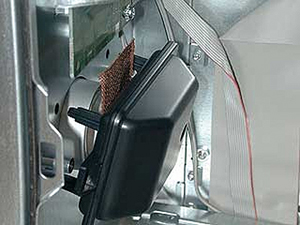
The benefit of this solution are two-fold. The speaker protection is mounted on the inside of the machine. While the lab manager must get inside of the machine and take apart the speaker assembly in order to install the mesh, so would anyone wanting to remove it. In addition, the mesh is not taped or glued to the case so it can be removed by authorized individuals without a great deal of effort and without damage to the faceplate.
This solution will offer protection against accidental contact with the speaker but would not be effective against a determined vandal with a pencil or pen. In addition, commonly available metal or vinyl meshes could fray at the ends. This would leave strands of plastic or conductive wire floating around on the inside of and wreaking havoc with the Mac.
- Documentation
- Administration
- Authentication
- General Software
- Hardware
- Miscellaneous
- Multimedia
- Networking
- Operating Systems
- Outside Presentations
- Programming & Scripting
- Security
- Servers
- Short Courses
- System Deployment
- System Utilities
- What's New

